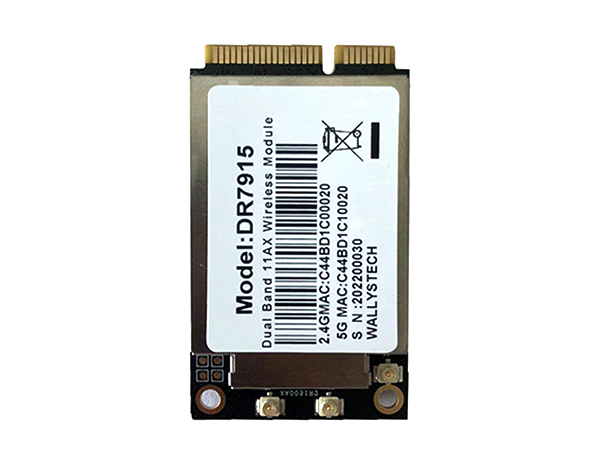Efficient application of DBDC MT7915+MT7916 in IPQ4019/IPQ4029wifi router|Wallys
The difference between MT7915 and MT7916
MT7915 and MT7916 are two Wi-Fi 6 chips launched by MediaTek. Their main difference lies in the process and functional characteristics.
First of all, MT7916 adopts a more advanced 6nm process, compared with MT7915 adopts 12nm process, so MT7916 has certain advantages in terms of power consumption and performance.
Secondly, in terms of functional characteristics, MT7916 has the following advantages over MT7915:
1. Higher maximum rate: The maximum rate of MT7916 can reach 4.8Gbps, which is higher than 3.6Gbps of MT7915.
2. More spatial streams: MT7916 supports 8x8 MU-MIMO, while MT7915 only supports 4x4 MU-MIMO, so MT7916 has better performance when multiple users transmit data at the same time.
3. More advanced scheduling algorithm: MT7916 supports OFDMA, which can make more effective use of spectrum resources and improve network capacity and throughput.
Overall, the MT7916 is a more advanced Wi-Fi 6 chip with higher performance and more features.
MT7915 and MT7916 two mini pcie moudle applications
Both MT7915 and MT7916 are Wi-Fi 6 mini PCIe modules launched by MediaTek, which are mainly used in industrial equipment, smart home, video surveillance, intelligent transportation and other fields that require high-speed and stable wireless networks
Both modules support the 802.11ax standard, can provide high-speed wireless network connection, support multiple users to transmit data at the same time, and have better network capacity and throughput. At the same time, they also support advanced scheduling algorithms such as MU-MIMO and OFDMA, which can more effectively use spectrum resources and improve network performance.
In terms of application, both MT7915 and MT7916 can be used in scenarios that require high-speed wireless network connection, such as smart home, video surveillance, intelligent transportation, industrial automation and other fields. Their miniaturized design can be easily embedded in various devices, providing high-speed and stable wireless network connections for devices, so as to achieve more efficient data transmission and applications.
Wallys already has DBDC mini pcie moudle for DR7915 (MT7915).

MT7916 mini pcie moudle is coming soon, I believe you are also very much looking forward to it
If you have any questions, please contact: sales@wallystech.com
Or wallys's website: https://www.wallystech.com/
With over 15 years of experience in wireless industry and penetrating market olfaction, Wallys has designed and manufactured many high quality and cost-effective router boards , wireless network cards,antenna ,enclosure and etc., Wallys always keeps up with the most cutting-edge wireless technology, aimed to help customers take the preemptive opportunities to occupy the market and lead a win-win cooperation.
Comments
Post a Comment